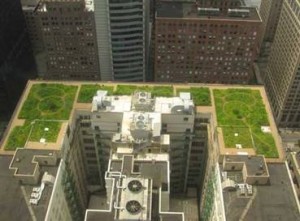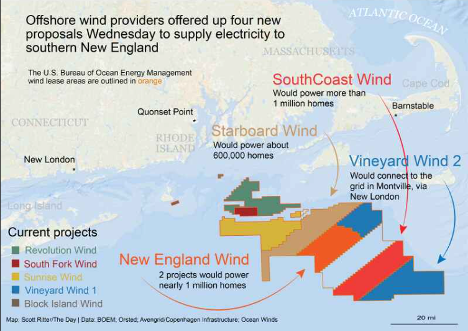Green roofs offset global warming, study finds

Filling rooftops with plants and dirt can help pull a modest amount of heat-trapping carbon dioxide out of the atmosphere, found a new study.
While green roofs certainly won’t solve the global warming problem, their ability to sop up greenhouse gases — even just a little bit — bolsters the case for planting them on city buildings, despite extra costs on the front end, said lead researcher Kristin Getter, of Michigan State University in East Lansing.
“The key to fighting global warming is capturing carbon from the atmosphere and storing it in new reservoirs that weren’t storing carbon before,” Getter said. “In the whole scheme of things, green roofs are not the one answer to sequestering carbon, but they will certainly help.”
Green roofs offer a long list of known benefits. They lower air-conditioning costs in the summer by absorbing and reflecting heat. They lower heating costs in the winter by adding extra insulation.
Green roofs appeal to cities because they soak up rainwater, making excess stormwater less likely to flood sewage systems and inflate sewage treatment costs. Plant-filled rooftops make urban areas less likely to become heat islands. They reduce air pollution and noise pollution. And vegetation, even when it’s several stories up, provides habitat for animals.
Like any forested or vegetation-covered area, a patch of green on top of a roof should theoretically lower levels of carbon dioxide in the air, as well. Plants breathe in the greenhouse gas like we breathe in oxygen, and they store carbon in their leaves and other tissues. Until now, however, no one had measured how much carbon a green roof could actually take in.
Getter and colleagues began by measuring the amount of carbon stored in vegetation above ground on 12 typical green roofs in Michigan and Maryland. For two growing seasons, they also measured carbon both above and below ground on an experimental roof at Michigan State University.
Crazy green-energy ideas that just might work
There are many options up for consideration as renewable energy besides windmills and solar panels. And these ideas are so wacky they just might work.
Although the numbers varied from roof to roof and even between different areas of the same roof, the scientists calculated a total of 375 grams of carbon in an average square meter of roof.
The metropolitan area of Detroit has between about 65 million square meters and 85 million square meters of rooftop land. Greening all of that area, the researchers reported in the journal Environmental Science & Technology, would be like removing 10,000 mid-sized SUVs or trucks from the roads for a year.
A green roof’s ability to sequester carbon lasts only a year or two. At that point, the amount of carbon emitted by the decay of soil and plant material balances out the carbon taken in by photosynthesis. Still, that’s two extra years of offsets that make a green roof potentially worthwhile, said David Sailor, an engineer at Portland State University in Oregon.
His models estimate a nine-year delay before the energy savings of a green roof offset the money and energy required to build it. Those costs can be up to twice as high as what it takes to build a traditional roof. The new study lowers the estimated payback time to seven years.
That’s a significant benefit, Sailor said, given that green roofs also last up to twice as long as traditional roofs.
“Their argument is that the carbon sequestration in plant biomass should be considered one of the co-benefits of a green roof,” Sailor said. “Taken along with other co-benefits, you start to tell a very compelling story for green roofs.”
© 2009 Discovery Channel









